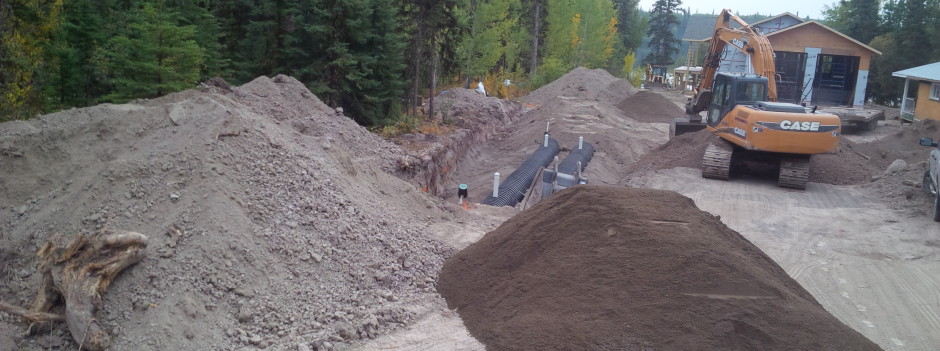Care and maintenance of a residential onsite septic system will help ensure that the system lasts as long as possible, and will reduce costs associated with waste water treatment.
While statements like “it works fine” and “we’ve never had a problem” are quite common, unless the system is being carefully looked at on a regular basis there really is no way to know what is happening with it until something goes wrong.
A bit of information should help the system owner to do their part in protecting the investment made in the onsite wastewater system.
With that in mind, the following is a good starting point. More in-depth information can also be found in the links page.
Operation Do’s and Don’ts
for the Onsite System Owner
DO’s
• Maintenance! Follow the operation and maintenance plan!
• Follow the manufacturer’s recommendations regarding the use and care of the components of the system.
• Educate everyone who uses your system about use, care and maintenance of the system.
• Avoid doing large amounts of laundry, dishes or showers/baths on the same day.
• Use liquid laundry detergents instead of powder products.
• Put kitchen scraps in the garbage or compost.
• Ensure that toilets and fixtures do not leak.
• Put leftover cooking grease and oil in the garbage.
• Keep records of all maintenance, problems, system performance, test results and modifications to the system.
• Contact the appropriate people if problems are encountered.
DON’T
• Flush non-biodegradable items into the system, i.e. cigarette butts, hair, condoms, coffee grounds, etc.
• Flush cat litter of any kind.
• Use or install a garburator or sani-dump. This system was not designed to accept these wastewater sources.
• Flush paints solvents or other chemicals into the system.
• Flush large amounts of cleaning products into the system.
• Flush any solvent based cleaning products into the system at all.
• Flush paper towel or feminine hygiene products into the system.
• Use septic tank additives as they can damage the system.
• Place any landscaping other than grass over top of any part of the system or plant trees and shrubs close to any component.
• Park vehicles or drive over any part of the system.
• Build structures over any part of the system.
• Allow large animals, or any animals that may compact the soil or dig in it, on any part of the system.
• Use the system beyond its designed capacity, i.e. allow more people to use it than it was designed for.
If an occupant of the home will be taking chemotherapy drugs or long-term antibiotics, contact the Planner or Maintenance Provider for suggestions to minimize the damaging effects.
Source Control Policy
The residential system is intended for use with normal residential effluent. There are various quality standards for the effluent discharged from the home to the system, and it is the owner’s responsibility to ensure that these are complied with. It is recommended that owners ensure that their liability insurance covers them for liability associated with discharge of effluent that causes damage to the environment.
The following should not be discharged:
1. Any sewage in a volume or flow rate greater than shown in the operation and maintenance plan.
2. Any per minute sewage in flow rate exceeding 3 % of the daily design flow.
3. Any sewage in flow rate exceeding 8 times daily design flow rate per hour, e.g., (1645 x 8 ÷ 24 = 548.33 Litres /hr);
4. Any liquid or vapor having an average temperature higher than 50°C;
5. Any flammable or explosive material;
6. Any garbage;
7. Any metal, plastic, wood or other solid or viscous substance capable of causing obstruction or interference with the proper operation of the sewerage system or treatment process;
8. Any sewage having a pH limit less than six (6.0) or greater than nine (9.0);
9. Any industrial waste;
10. Any sewage containing any of the following materials in excess of the indicated concentrations:
1 BOD5 300 mg/L
2 Suspended solids 350 mg/L
3 Total sulfides expressed as H2 5 mg/L
4 Phenolic compounds 2 mg/L
5 Oil and grease 50.0 mg/L
6 Total cyanide expressed as HCN 0.2 mg/L
7 Total copper expressed as Cu 1.0 mg/L
8 Total chromium expressed as Cr 1.0 mg/L
9 Total nickel expressed as Ni 1.0 mg/L
10 Total lead expressed as Pb 1.0 mg/L
11 Total zinc expressed as Zn 1.0 mg/L
12. Any water or waste containing a toxic or poisonous substance capable of constituting a hazard to humans or animals, or any water or waste containing substances in such concentrations that are not amenable to treatment or reduction by the sewage treatment process employed, or are amenable to treatment only to such a degree that the sewage treatment plant effluent and sludge cannot meet the requirements of any other agency having jurisdiction over discharges from the system, or which would damage the dispersal field soils (this would include such items as excess chlorine bleach, excess sodium, disinfectant cleaners, drain cleaner, photo chemicals etc);
13. Any substance that when concentrated in sewage treatment plant, effluent disposal fields, or in sludge, could result in a contaminated site (this would include paints and solvents);
14. Rainwater runoff from the surface or from roofs etc, storm or surface water, water from swimming pools or hot tubs;
15. Grease, oil, solvents etc;
16. Flushing water from water softeners;
17. Output from garburators.
